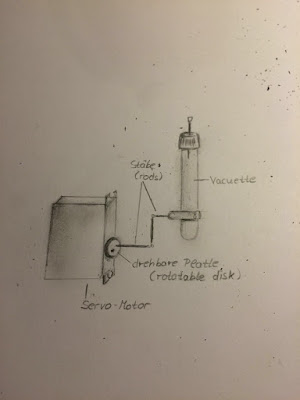As there is no drag coefficent for parachutes of this design a calculation of the exact size of the parachute and the holes was not possible. Therefore, we developed a testing concept for measuring the air resistance with an air velocoty of 11 m/s.
Within the test, we drove with a convertible. We arranged an anemometer next to our parachute that was attached to a dynanometer, The latter one running with the CassyLab software. In the beginning our parachute had holes which surely would be too small. Within the test, we enlarged them until the air resistance was as big as needed.
The test was very succesful. This is what our parachute finally looks like:







